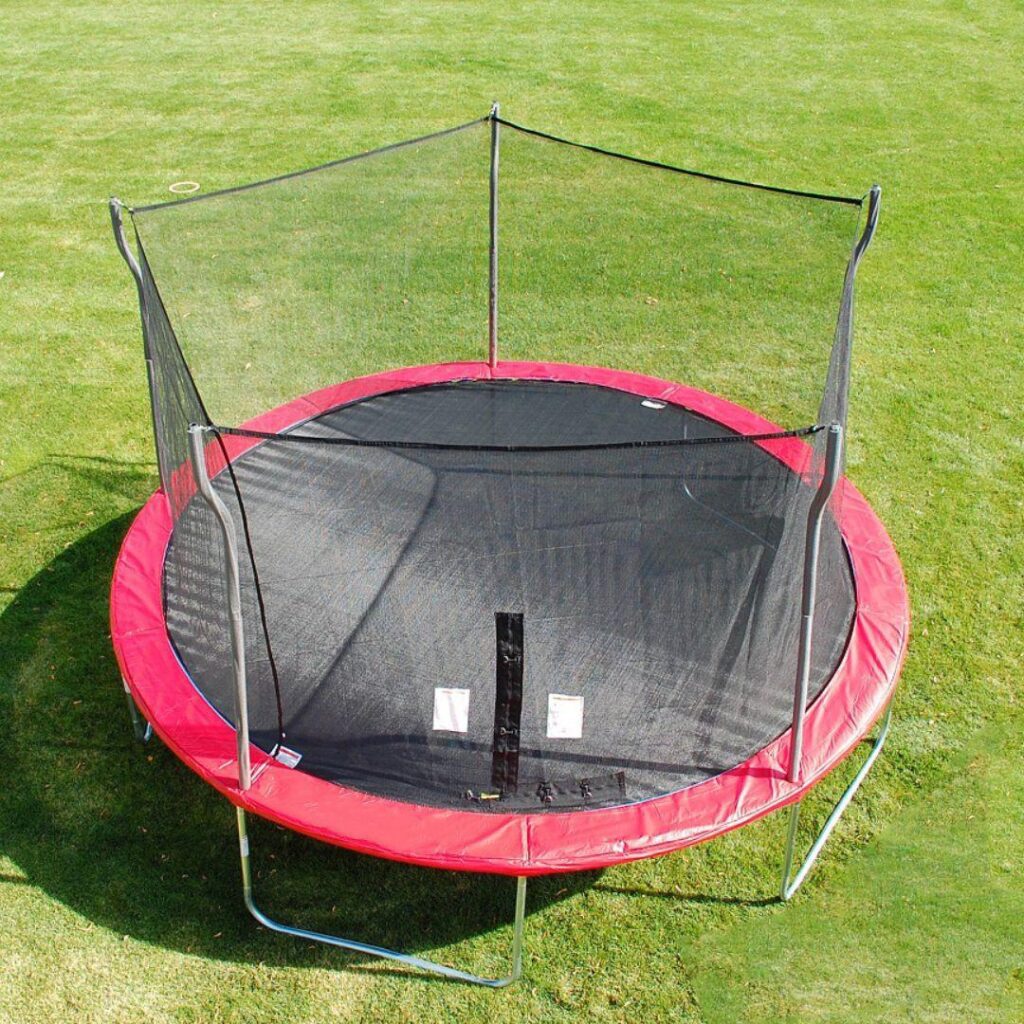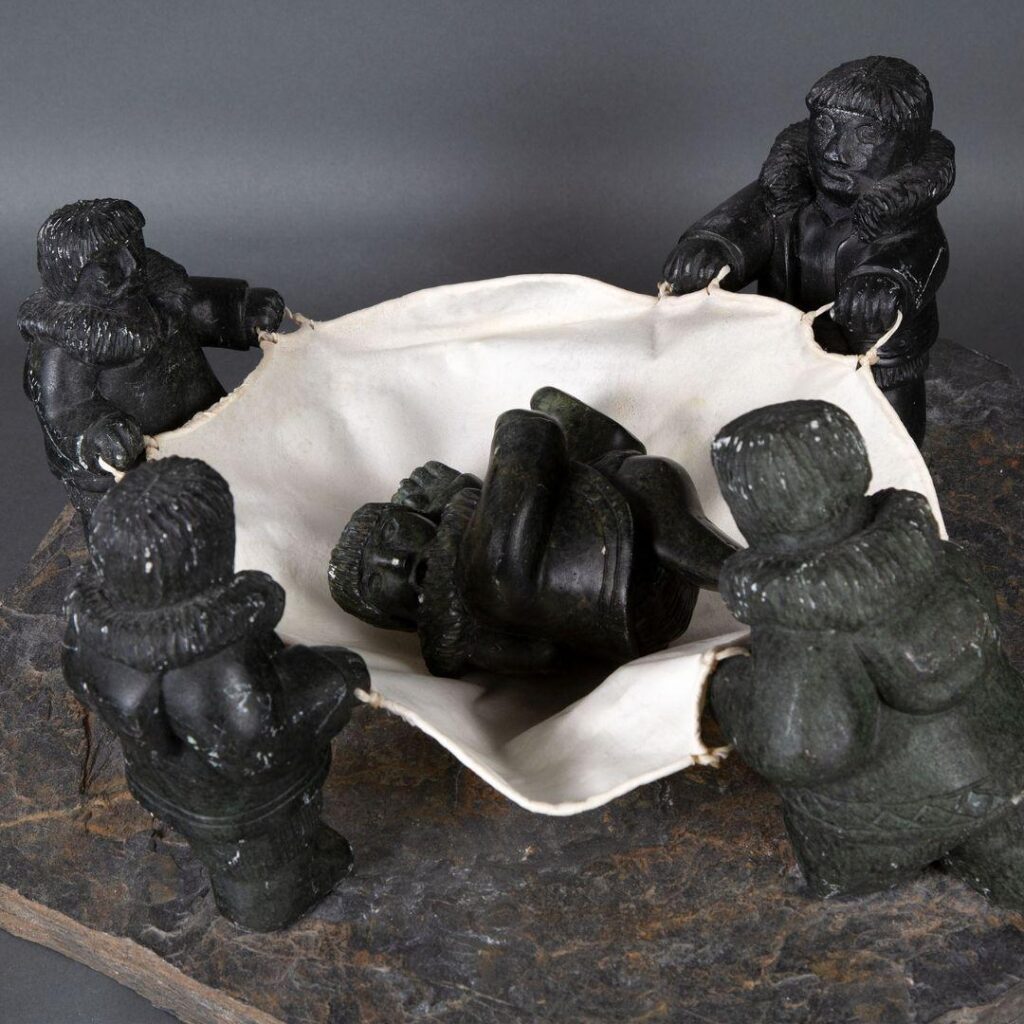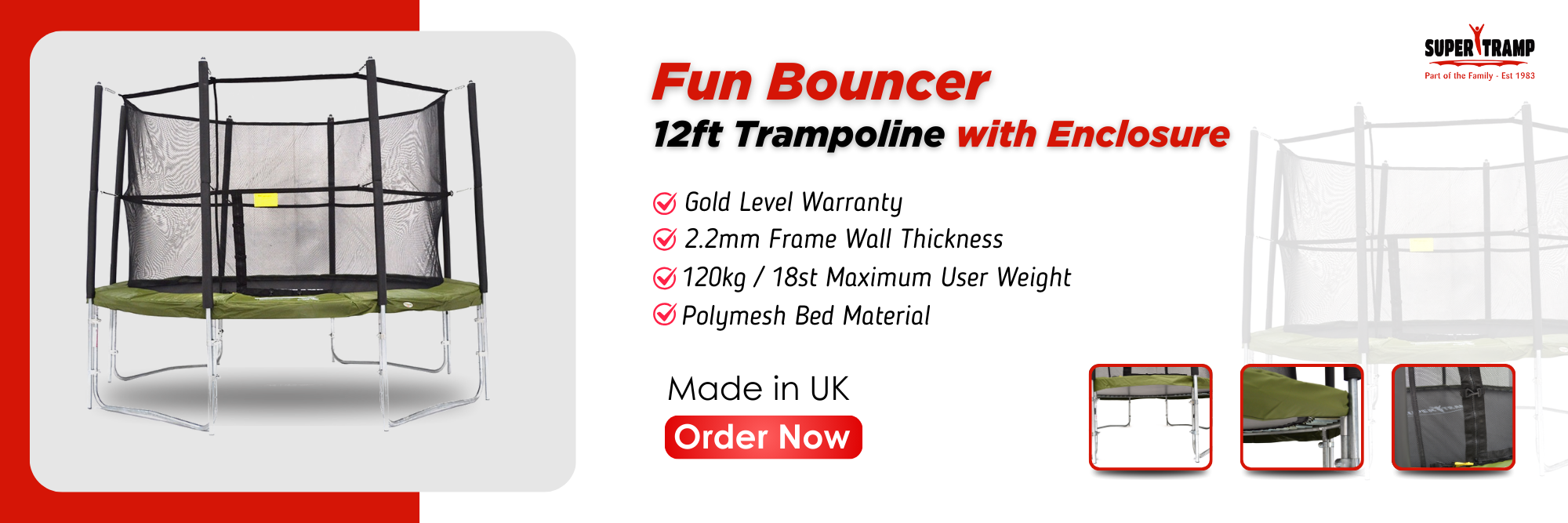Table of Contents
ToggleEver wonder how a basic piece of stretched fabric could bring so much joy and athletic ability? A fascinating detail about the first modern trampoline is that it was created in 1936 as a means of safe practice for circus trapeze artists. This creation, which was made in a University of Iowa garage by George Nissen and Larry Griswold, gained international recognition very fast. Another fascinating fact about trampolines is they are used to train WWII pilots and astronauts, to get them used to the weightless conditions of air travel.
We’ll delve into the intriguing history of the trampoline in this blog, following its ancestors from prehistoric times to the present. We’ll learn the history of this cherished equipment, including how it changed throughout time and acquired the unusual moniker “trampoline.”

Early Beginnings of the Trampoline
Ancient Uses
The history of the trampoline dates back thousands of years, even before it became a common sight in contemporary leisure. An invention of the Inuit people of North America was a trampoline constructed of walrus hides. This clever contraption, called a “blanket toss,” was employed not just as a source of amusement but also as a useful instrument for locating game animals in wide-open, frozen areas. By being launched into the air, participants would be able to see their surroundings from above.
In a similar vein, numerous ancient societies created their own bouncing devices. For example, there are accounts of people in mediaeval Europe doing acrobatic feats during festivals and celebrations utilising improvised springboards. These earliest examples of aerial mischief paved the way for the more sophisticated trampolines of today.

19th Century Developments
Trampoline-like devices experienced tremendous developments in use during the 19th century, especially in the circus sector. Performers and acrobats enhanced their aerial acts with the use of safety nets and springboards, dazzling audiences with their audacious acrobatics. These performances laid the groundwork for the contemporary trampoline by showcasing the possibility of regulated, repetitive bouncing.
By the end of the 1800s, the idea for the contemporary trampoline started to take shape. Using simple frames and cloth, the early versions enabled performers to reach higher altitudes and carry out more intricate movements. These developments were essential in the evolution of trampolines from basic bouncing surfaces to the complex ones we use today.
These concepts resulted in George Nissen and Larry Griswold’s creation of the first modern trampoline at the beginning of the 20th century. They created a working prototype in 1936, using springs to secure a canvas stretched across a steel frame, modelled after the trapeze acts they saw in circuses. The trampoline’s transition from a novelty item for circus acts to a popular sporting and leisure tool began with this development.
The Birth of the Modern Trampoline
George Nissen and Larry Griswold
The inventive brains of Larry Griswold and George Nissen are responsible for the creation of the contemporary trampoline. Circus trapeze artists’ stunning aerial displays fascinated both tumbler and gymnastics instructor Larry Griswold and competitive gymnast and diver George Nissen. An idea that would transform gymnastics and entertainment was inspired by the way performers used safety nets to flip and rebound.
Creating the First Modern Trampoline
Early 1930s:
Larry Griswold and George Nissen started tinkering with a bouncing device.
Aimed to develop a controlled, safer rebounding tool for sportsmen.
1936 Breakthrough:
Built the first trampoline of the modern era in a University of Iowa garage.
Developed following several iterations and modifications.
Innovative Design:
Robust canvas sheet fastened to a spring-loaded steel frame.
Supplied the elasticity and tension required for continuous bouncing.
Allowed users to safely execute intricate manoeuvres and reach considerable heights.
Impact:
Transformed gymnastics instruction and leisure time pursuits.
Laid the groundwork for the trampoline’s widespread use and development.
Early Uses in Gymnastics and Entertainment

Gymnastics Training:
Gymnasts swiftly adopted it for secure aerial training.
Allowed for effective refinement procedures and frequent bouncing.
Changed gymnastics instruction to lower the chance of injury.
Entertainment Industry:
Displayed by Nissen and Griswold in fairs and exhibitions.
Entertained spectators with feats of acrobatics.
Became well-known as a standard in entertainment settings.
Widespread Adoption:
Became essential in facilities used for gymnastic training.
Opened the door for further breakthroughs and advancements.
Firmly established as a popular leisure pastime and competitive sport.
Origin of the Name “Trampoline”
Etymology
The interesting linguistic origins of the term “trampoline” can be found in Spanish. “Trampolín” is the Spanish word for “diving board.” This word properly described the bouncing and jumping motion associated with the original trampolines. This Spanish word served as inspiration for George Nissen and Larry Griswold while they worked on their invention. The word “trampolín” was altered to “trampoline” to give it a distinctive English meaning.
Popularisation
After the term “trampoline” was coined, it took off and expanded all over the world. People from many cultural backgrounds could relate to the name, which made it simple to remember and link to the apparatus’s pleasure and athleticism. The term “trampoline” came to refer to the modern jumping apparatus as it gained popularity in the 1940s and 1950s, especially in the United States.
The phrase was adopted by several nations, but slightly differently. For example:
Like in English, it’s referred to as “trampoline” in French.
It is known as “Trampolin” in German.
It’s still called “trampolino” in Italian.
The language variations underscore the universal appeal and versatility of the name “trampoline,” thereby solidifying its position in recreational and athletic lexicons around the globe.
Trampolines in Popular Culture and Sports

Trampolines in the Olympics
At the 2000 Summer Olympics in Sydney, the trampoline made its formal Olympic debut. This recognition of trampolining as a competitive sport in addition to a recreational pastime was a noteworthy milestone. Through a series of acrobatic manoeuvres, athletes display their skills in height, form, and technique.
Achievements
Alexander Moskalenko of Russia won the men’s individual gold medal in trampolining, while Irina Karavaeva of Russia won the gold in the women’s solo category.
Every Summer Olympics has featured a high-level trampoline competition featuring competitors from all over the world.
World Championships are arranged by the Fédération Internationale de Gymnastique (FIG), which helps to further popularise and standardise the sport throughout the world.
Trampolines in cinema
Additionally, trampolines have established a sizable niche for themselves in the entertainment sector. Their adaptability and enjoyable quality have made them a well-liked component in a variety of media and leisure pursuits.
Cinema and TV Shows:
Trampolines give a lively and fun flavour to cinemas and television shows. They are frequently used in comedy moments and action sequences.
Trampoline scenes from popular television series like “The Simpsons” and “Friends” have become iconic, solidifying their status in popular culture.
Recreational Activities:
Trampoline Parks: The use of trampolines for recreation has changed as a result of the development of trampoline parks. Numerous trampoline-based sports, including basketball, dodgeball, and freestyle jumping, are available at these parks.
Fitness Classes: With exciting, high-energy workouts, trampoline-based fitness courses are becoming more and more popular as a means of improving health and wellness.
Safety Improvements

Early Safety Concerns:
When trampolines initially gained popularity, people were very concerned about safety. Falling off the trampoline and getting hurt was a big risk.
Several mishaps were caused by the original designs’ lack of proper padding and enclosures.
Addressing Safety Concerns:
To mitigate these concerns, manufacturers started putting safety procedures in place. To protect people from getting hurt when they fell onto hard surfaces, padding was put around the steel frame and springs.
The risk of falling off the trampoline was greatly decreased with the addition of safety nets and enclosures, making it safer for users.
Modern Safety Features and Guidelines:
Modern trampolines are surrounded by strong safety enclosures that keep people from bouncing out.
All springs and frames are covered with thick, weather-cover cushioning to prevent jumpers from coming into contact with any sharp or rough surfaces.
Better trampoline mats reduce the chance of tearing or injury since they are more resilient and offer a better bounce.
Safety guidelines are offered by groups such as the American Academy of Paediatrics, which suggest limiting the number of users at one time and providing monitoring to avoid crashes.
Conclusion
The rich history of the trampoline never ceases to amaze and excite people of all ages. From its prehistoric beginnings to its development by George Nissen and Larry Griswold in the 1930s, the trampoline has grown to become a cherished global phenomenon. Its name, which comes from the Spanish word “trampolín,” sums up the fun and athleticism it offers.
With their inclusion in Olympic competitions, films, TV series, parks, and fitness routines, trampolines have had a significant influence on sports, entertainment, and fitness. The trampoline has been associated with enjoyment and physical fitness since its inception and continues to hold this status now. Generations of people are inspired to be joyful and sporty by its rich history and ongoing development.
The modern trampoline was invented by George Nissen and Larry Griswold in 1936. They were inspired by trapeze artists using a tight net to bounce and perform tricks.
George Nissen was inspired by watching trapeze artists perform and bounce off their safety nets. He thought it would be great to create a device specifically for bouncing and acrobatics.
The name “trampoline” is derived from the Spanish word “trampolín,” which means “diving board.” Nissen and Griswold chose this name to reflect the bouncing and aerial nature of the device.
Modern trampolines have improved safety features such as padded frames, safety nets, and non-slip surfaces to reduce the risk of injury.
Trampolines are used for recreational purposes in backyards and parks, in gymnastics training, competitive sports, physical rehabilitation, and fitness workouts.
DON'T MISS...
- How Can Enclosure Pole Covers Extend the Life of Your Trampoline?
- 8-Inch Trampoline Springs: Discover the Science Behind the Perfect Bounce8-Inch Trampoline Springs: Discover the Science Behind the Perfect Bounce
- What Are the Top Benefits of Using a Fitness Trampoline?
- What You Need to Know Before Buying Frame Pads for Your Trampoline
- Why You Should Swap Jogging for Skipping Rope for Better Results





